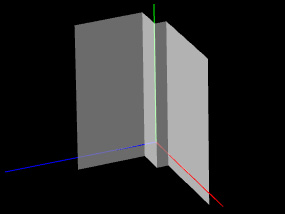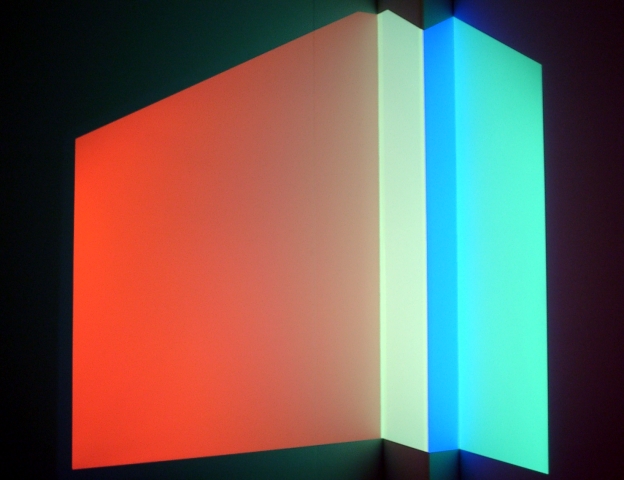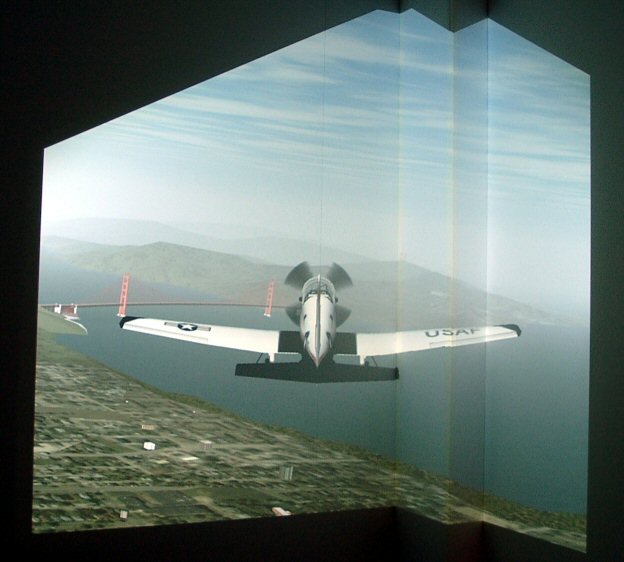
|
|||||
 |
 |
 |
 |
 |
 |
RANSAC-Assisted Display Model Reconstruction for Projective DisplayAbstractUsing projectors to create perspectively correct imagery on arbitrary display surfaces requires geometric knowledge of the display surface shape, the projector calibration, and the userís position in a common coordinate system. Prior solutions have most commonly modeled the display surface as a tessellated mesh derived from the 3D-point cloud acquired during system calibration. In this paper we describe a method for functional reconstruction of the display surface, which takes advantage of the knowledge that most interior display spaces (e.g. walls, floors, ceilings, building columns) are piecewise planar. Using a RANSAC algorithm to recursively fit planes to a 3D-point cloud sampling of the surface, followed by a conversion of the plane definitions into simple planar polygon descriptions, we are able to create a geometric model which is less complex than a dense tessellated mesh and offers a simple method for accurately modeling the corners of rooms. Planar models also eliminate subtle, but irritating, texture distortion often seen in tessellated mesh approximations to planar surfaces. Results
(Left) Matlab rendering of successively reconstructed planes. (Right) Reconstructed display surface model.
(Left) Extracted display model re-projected onto the real-world corner. (Right) Flight simulator application displayed into the complex room corner without distortion. PublicationsP. Quirk, T. Johnson, R. Skarbez, H. Towles, F. Gyarfas, H. Fuchs, "RANSAC-Assisted Display Model Reconstruction for Projective Display" Proceedings Emerging Display Technologies 2006, Alexandria, VA, Mar, 2006 (pdf)
|


